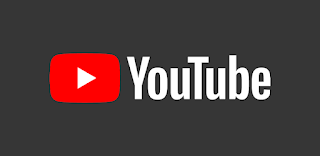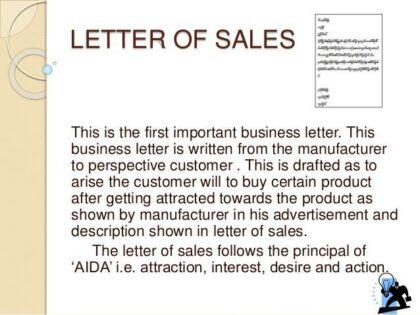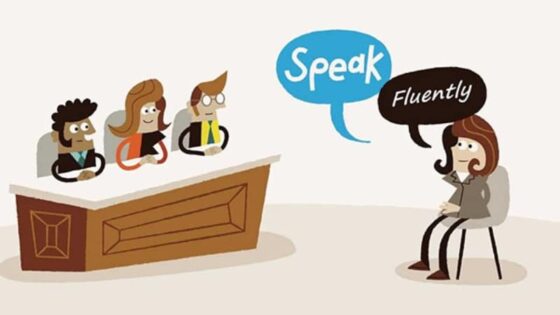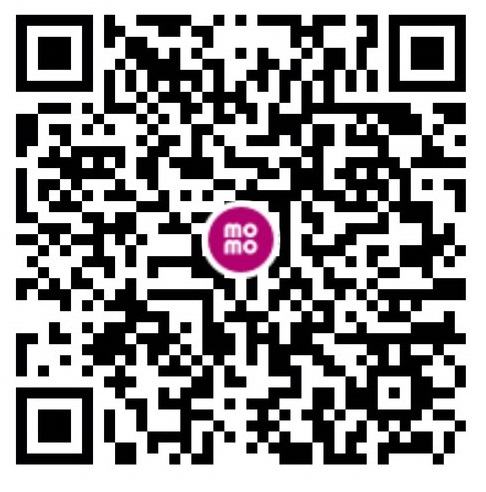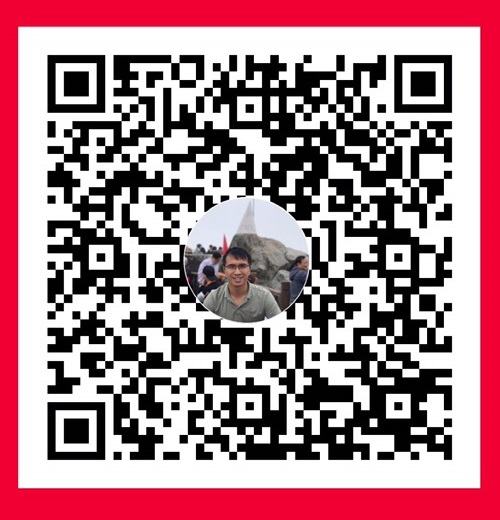
II. Lời khuyên:
-Theo tớ thì môn này điểm thi phụ thuộc nhiều vào giáo viên ktra các bạn lúc thi nên cơ bản là điểm của các bạn trong cùng lớp đã là k thể so sánh được rồi (1 ht thi thường có 2 giáo viên).
-Ngay từ quá trình học thì thầy/cô giáo khá nhiều bài tập và ktra btvn kĩ lắm nên các cậu cứ dành thời gian ôn hàng ngày đi, mỗi ngày nửa tới 1 tiếng thì chẳng mất bao nhiêu thời gian.
-Ôn thi nên ôn nhóm (2 ng) chọn đứa nào nó giỏi với phát âm TA tốt vào mà sửa cho nhau. Đứa hỏi đứa trả lời, khá ổn, đã thế ôn xong còn chém gió được bao nhiêu chuyện!
-Trong thời gian học TACN thì tớ còn tham gia 1 khóa học toiec nên cảm giác khá ổn, thấy cũng giúp giúp được cho nhau về phần từ mới(cảm giác cá nhân) học luôn cũng tiện, sau này đỡ ngỡ ngàng với việc học để thi Toeic ra trường.
-Kiến thức của TACN1, theo ý kiến cá nhân của tớ thì lq khá nhiều đến tài chính tiền tệ nên bạn nào học được môn này thì cách tốt là dịch hết qua TV nhanh chóng dễ hiểu, học thuộc rồi dịch lại.
-Summary là phải học thuộc nhé, tui ngồi đọc thì hơi giống tụng kinh nhưng tớ vẫn tra tấn lỗi tai ông anh hàng ngày J))
-Về phần câu hỏi trong sách thì khi ôn thi các cậu nên tự trả lời lại và làm đề cương, tớ có cô bạn làm nên lười đi photo về học thôi, lười quen rồi.
Chú ý: tất cả phần summary là tớ tổng hợp lại từ bài giảng của cô, chỉ sửa chữa vài chỗ, không phải cô nào cũng giống nhau nên các cậu tham khảo thôi nhé.
Tớ khá rảnh nên bạn nào cần hỏi han hay giúp đỡ gì thì cứ kêu tớ, biết tớ giúp liền.
Không nghĩ là nhiều lớp học môn này đợt này vậy nhưng vì inbox nhiều quá, fb nó dọa block đành làm cái file post lên thư viện vậy.Tớ làm word khá chuối củ nên mọi người thông cảm!

Unit 1: Economics
1. Firstly, it talks about the concept of ECONOMICS.
(Economics is the study of how people choose to use scare resources to satisfy their unlimited wants).
2. Secondly, it talks about the two main types of economics, includes:
· Microeconomics focuses on the actions of individuals and industries.
· Macroeconomics focuses on the activities of entire economy and international marketplace.
3. Thirdly, it talks about the concept of ECONOMISTS.(they are people who study economics).
4. Fourthly, it talks about three important theories from Adam Smith, Max and Key as to how people and Government should behave within market.
5. Finally, it talks about the roles of economics .
Unit 3: Microeconomics
Unit 3 talks about microeconomics.
· Firstly, it talks about the definition of microeconomics.
(Microeconomics is the study of how consumers and firms behave while making decision on the allocation of scarce resources).
· Secondly, it talks about the limits (for example, the limits in incomes, in budgets, in number of working hours and in resources.) and microeconomics is about the allocation of scarce resources.
· Thirdly, it talks about the decisions on allocation in a planned economy and in a modern market economy.
· Finally, it talks about the important themes in microeconomics
-Theme 1 is trade- offs that consumers, workers and firms face:
Consumers face the limited incomes and trade- offs save or spend.
Workers face the limited time and trade- offs working now or continued education; trade- offs working or leisure; trade- offs working for a small or large company.
Firms face the limited in resources have available to produce.
-Theme 2 is the role of prices: All trade- offs are based on the prices faced by consumers, workers and firms.
-Theme 3 is the role of the markets: In a market economy, markets are the place where prices are determined/ set by the interactions of consumers, workers and firms.
Unit 4: Macroeconomics
· Firstly, the goals of macroeconomics.
The goal of macroeconomics is to look at overall economic trends, such as: Employment levels, economic growth, balance of payments, inflation and so on.
Secondly, the two major policies of macroeconomics. They are: fiscal policy and monetary policy.
1. Fiscal policy is government policy relates to the Government’s revenue and spending, and the Ministry of Finance controls it.
2. Monetary policy is government policy relates to the nation’s money supply and the Central bank controls it.
Thirdly, the differences between Microeconomics and Macroeconomics.
Finally, the relationship between Microeconomic and Macroeconomics
They are interdependent and complement one another.
Unit 5: Demand and Supply
Unit 5 talks about Demand and Supply
1. Firstly, it talks about demand
– Demand describes how price influences buyer’s behavior
– A movement of demand curve when a change in prices or one of shift factors of demand
• A change in prices causes a movement along a given demand curve
• The shift factors of demand are society’s income, prices of others goods, expectations, and tastes. A change in one of shifts factors causes a shift of the demand curve to the right or to the left.
2. The second main ideal is supply
– Supply describes how price influences seller’s behavior
-A movement of supply curve when a change in prices or one of shift factors of supply
• A change in prices cause a movement along a given supply curve.
• The shift factors of supply include: price of inputs, technology, taxes, and suppliers’ expectations. A change in one of shift factors of supply causes a shift of the entire supply curve to the right or to the left.
3.Finally, it talks about Equilibrium
• Equilibrium is a situation in which there is no tendency for change.
• Equilibrium occurs when demand curves intersect supply curves. At this point quantity demanded equals quantity supplied
Unit 6: Public Finance
– Firstly, it talks about the Federal budget:
· Federal budget comes from different kinds of taxes: individual tax, customs duties, payroll tax, excise tax,…
· Federal budget constitute 2 funds: federal fund and trust fund:
Ø Federal fund is designated from: income taxes and corporate taxes. It uses for conducting the annual appropriation process.
Ø Trust fund is designated from payroll taxes. It uses to pay for very specific government programs.
– Secondly, it talks about Federal Borrowing.
· To finance the difference between revenue and spending:
Federal government borrows money by issuing bond or other type of securities.
– Finally, it talks about debt held by Federal government. There are debt held by public and debt held by the Federal account.
· Debt held by the federal account is the amount of money that the treasury has borrowed from itself.
· Debt held by the public is the total amount the government owes to all of its creditors. That includes American, Foreign individuals and government of foreign countries.
Unit 7: Fiscal policy
· Firstly, the influence of government spending and taxation to the overall performance of the economy
Secondly, deficits:
– It’s run when government spends more than its receives
– To finance deficit, government borrows money or prints money
– Deficit is ether harmful and helpful
– Deficit spending
Thirdly, concept of fiscal policy: is a government policy related to taxation and public spending; the government uses it in an attempt to maintain economic growth, high employment and low inflation.
– There are 2 types of fiscal policy
– expansionary (or loose)
– contractionary (or tight)
Finally, the factor influence Government decisions of fiscal policy
– Inside factor: unemployment rate, inflation rate…
– Outside factor: political consideration…
UNIT 8:TAXATION
Unit 8 is about the taxation.
1. Firstly, it talks about the functions of taxation.
Ø The primary function of taxation is to raise revenue to finance the Government expenditure.
Ø other functions: just like
· Dissuading people from smoking, drinking alcohol…
· Redistributing income and wealth
· Restricting import and encouraging domestic production
2. Secondly, it talks about the advantages and disadvantages of 2 types tax rates
Ø Progressive tax
Ø Regressive tax
3. Thirdly, it talks about the tax evasion.
4. Fourthly, it talks about the avoiding tax on salaries.
5. Finally, it talks about the avoiding tax on profits.
Unit 10: Insurance
Firstly, it talks about functions of insurance:
– Predicting the losses.
– Financing and redistributing the cost of losses.
· Secondly, it talks about definition of insurance.
In finance definition, insurance is a finance arrangement that redistributes the costs of unexpected losses.
(the insurance arrangement involves the transfer of many different exposures to loss to one insurance pool).
· Thirdly, it talks about the operation of insurance system:
An insurance system accomplishes the redistribution by collecting a premium payment from the participant in the system.
· Fourthly, it talks about the benefits of insured:
– Reducing the anxiety about losses
– Receiving the compensation if losses occur
· Finally, it talks about the insurance contract:
– Like gambling.
Is a special contract, in which, insured and insurer, to exercise the utmost good faith towards each others.
Unit 11: Money and Functions
1. Concept of money:
· Money is a commodity accepted by general.
· Consent as medium of economic exchange.
2. The functions of money:
· Medium of exchange: in which medium of exchange is the most important function.
· Store of the value.
· Measure of value.
· Standard of deferred payment.
3. Two kind of money:
· Commodity money.
· Token money.
Unit 12: Monetary policy.1. Quantitative tools of monetary policy:
– Reserve requirement: the minimum amount of reserve as bank must have.
If FED want to reduce money supply , it raises reserve requirement.
– Discount rate is the interest that FED changes for the loans to other banks.
To reduce money supply, FED can rise discount rate.
– Open market operation: FED buy or sell government securities.
2. Central bank control over the supply of money:
CB(central bank) use:
– Expansionary MP(monetary policy)
– Restrictive MP
to control money supply.
· Expansionary MP reduce discount rate or reduce reserve requirement or buying bonds to promote Economy growth.
· Restrictive MP increase discount rate or increase reserve requirement or selling bonds to cool the overheating Economy.
Unit 14: Forex market
– -Firstly, it talks about the definition of the foreign exchange market.
The foreign exchange market is the market in which such national currencies are exchanged.
– Secondly, it talks about the main features of the foreign exchange market.
· It’s not an organized market with fixed hours and physical meeting place
-> it’s called an over the counter(OTC) market.
· It operates 24 hours a day because time differences.
· It has developed rapidly in the last quarter century in response to the increasing world trade volume and the expansion of international capital flows.
– Thirdly, it talks about the development of foreign exchange market.
It has developed quickly since 19th century in response to world trade of goods and services and the expansion of international capital flows.
– Fourthly, it talks about the world largest foreign exchange center. This is London. And 2 kinds of transaction are: spot and forward.
– Finally, it talks about three types of participants in the foreign exchange market. There are customers, market maker, brokers.
– Firstly, it talks about essential functions of financial markets:
· Channeling funds from those who have saved surplus funds to those who have a shortage of funds.
– Secondly, it talks about structure of financial markets:
· Debt and equity markets.
· Primary and secondary markets.
· Exchanges and OTC markets.
· Money and capital markets.
Main points | Details | Important words |
Definition | Economics is the study of the production and consumption of goods and the transfer of wealth to produce and obtain those goods | Well-being: includes the satisfaction people gain form the products and services they choose to consume, from their time spent in leisure and with family and community as well as in jobs, and the security and services provided by effective governments. GDP: gross domestic product Resources: include the time and talent people, the land, building, equipment… |
2 main types | + Microeconomics: focuses on the action of individuals and industries + Macroeconomics: analyze the economic activity of entire country or the international market | |
Economists | Seek to answer 3 important questions: 1. Producing what? 2. How to produce? 3. For whom? | |
3 theories | + Adam Smith: believed that people who acted in their own self-interest produced goods and wealth that benefited all of society + Karl Marx: believed that such exploitation leads to social unrest and class conflict. Laborers should own and control the means of production. + Keynesian School: describes how government can act within capitalistic economies to promote economic stability. | |
Roles | + Can describe all aspects of a country’s economy + Can help one understand human thought and behavior |
Main points | Details | Important words |
Definition | Microeconomics is a branch of economics that deals with the how consumers and firms behave while making decisions on the allocation of scarce resources. It looks at a compartmentalized view of an economy and focuses more on the basic theories of demand and supply. | Trade-offs: an exchange that occurs as a compromise. Limit: the greatest or least amount, number, or extent allowed or possible Much of microeconomics is about limits- the limited incomes, the limited budgets and technical, the limited number of hours in week Market: collections of buyers and sellers that together determine the price of a good. Allocate: distribute according to a plan or set apart for a special purpose. |
Roles | + helps consumers, firms, organizations and households make suitable decisions about particular activities. + helps economists have better understanding about economic theories in field of microeconomics + helps governments make suitable policies to support industries and firms. | |
3 themes | 1. How to make optimal trade-offs + Consumers based on their preferences to maximize their well-being by trading off the purchase of more of some goods with the purchase of less of others + Workers: people must decide whether and when enter the workforce. Workers face trade-offs in their choice of employment. + Firms face limits in terms of the kinds of products and the resources available. 2. The roles of prices + How prices are determined + How it affects demand and supply 3. The central role of markets |
Main points | Details | Important words |
Definition | Macroeconomics is a branch of economics that studies behavior of the hole economy and economy-wide phenomena. | Inflation: the rate at which the general level of prices for goods and services is rising. Economic health: A family’s economic health is influenced by a parents’ earning and spending habits. A nation’s economic health is influenced by government fiscal policies. Government’s spending: Government Spending is a part of Fiscal Policy and is used by the government to increase or reduce the aggregate demand. |
Goals | Looks at:
| |
Policies | 1.Fiscal policy (in the hand of Ministry of Finance) related to taxation and public spending. + Taxation and government spending greatly influence a country’s economic growth. 2. Monetary policy (supervised by each country’s Central Bank) controls a nation’s money supply + Central banks try to keep one eye on unemployment- resulting from economic slowdowns and one eye on inflation- resulting from an overheated economy. | |
Comparison |
+ Macro: country and government’s decisions + Micro: individuals and businesses’ decisions
+ Macro: top-down + Micro: bottoms-up |
Main points | Details | Important words |
Differences | + Demand and quantity demanded
+ Supply and quantity supplied:
| Equilibrium: the economic condition in which there is neither excess demand nor excess supply in the market. (or: Is a situation in which there is no tendency for change.) Market machanism: the manner in which consumers and producers can determine the price and the quantity the things produced. |
Roles of S&D | + Supply and Demand set up the market + The interactions of Demand and Supply determine the prices + By understading the factors influencing Supply and Demand, we can predict the changes of prices of goods and services when the economic circumstances changes. | |
Shift factors | + Shift factors of demand: 1. Society’s income 3.Prices of other goods 2.Expectations 4.Tastes +Shift factors of supply: 1. Inputs 3.Taxes 2.Technology 4.Supplier’s expectations | |
Demand curve | A price change causes a movement along a demand curve. A change in one of the shift factors shifts the D curve to the right or left. | |
Supply curve | A price change causes a movement along a demand curve. A change in one of the shift factors shifts the D curve to the right or left. | |
Equilibrium | + Is a situation in which there is no tendency for change. + Occurs at the price where quantity demanded equals quantity supplied |
Main points | Details | Important words |
Taxes | Sources of taxes:
Roles of taxes:
| Mature: to become due for payment or repayment Customs duties: a government tax on imports or exports. Excise taxes: tax placed on the sale or manufacture of a commodity, typically a luxury item. |
Federal Funds | + Is general revenues + Congress and President can decide to spend | |
Trust Funds | Pay for specific program: Medicare and Social security | |
Borrowing | + When the Government spends more money than it takes in form tax revenue + Treasury borrows money by issuing bonds + People buy bonds called investors | |
Debt held by Public | + Is the total amount the government owes to all of its creditors in the general public + Creditors: citizen, foreign individuals, government of other countries | |
Debt held by Federal account | + Is the amount of money that the Treasury has borrowed from itself |
Main points | Details | Important words |
Definition | Fiscal policy is a government’s policy related to taxation and public spending | Aggregate demand: aggregate demand (AD) is the total demand for final goods and services in an economy at a given time. Government revenue: the money received from taxation, fees, fines, intergovernmental grants or transfer, securities sales, mineral rights, and resources rights as well as any sales that are made |
Aims | + Maintain economic growth + Maintain high employment + Maintain low inflation | |
Sorting | +Expansionary (loose):
Increase spending + Contractionary (tight)
Reduce spending | |
Factors | + Level of economic growth + Unemployment | |
Deficit | + Occurs when the government spends more than it receives + It can be helpful or harmful the economy + Financed by:
|
Main points | Details | Important words |
Functions | + Primary function: raise government’s revenue + Discourage or encourage spending + Redistribute + Kinds:
| Depreciation: reducing the value of a fixed asset, by charging it against profits Disincentive: something which discourages an action. Loophole: a means of escape or evasion, a means or opportunity of evading a law, contract… |
(+) and (-) of tax system | + Double- taxation: impose on profits and dividends which shareholders gain from profits + Progressive tax: income taxes + Regressive tax: sales tax and VAT | |
Tax evasion (illegal) | + The higher tax rate, the more people cheat + There is a substantial ‘black’ or ‘underground’ economy nearly everywhere. | |
Tax avoidance (legal) | + Perks: company cars, free health insurance, lunches + Tax-deductible: donates to charities + Tax-shelters: postpone the payment of tax | |
Avoiding tax on profits | + Launching money: pass money through a series of companies in complicated transactions + Tax heaven:
+ Tax loss: profits are used up |
Main points | Details | Important words |
Definition | Insurance is a financial agreement that redistribute the cost of unexpected losses. Insurance agreement involves the transfer of money difference exposures to a insurance pool | Premium insurance: is a amount of money that insured gives insurer to receives the promise compensated (it’s my own definition ^^ coz I can’t find it) Insurance pool: is which combines the numerous exposures. Insurance agreement: is a financial agreement that redistribute the cost of unexpected losses. |
Roles |
| |
Insurance system | + Accomplishes the distribution of the cost of losses by collecting premium from participant + Insurers give promise to the insureds and take the premium from them + Insureds give premium to the insures and take the promise compensated when the evens of losses actually occur. + Can operate because insureds are willing to substitute the premium for uncertain loss | |
Why people are willing to pay premium | + To be relived of the uncertainty about loss + To be compensated when the even of loss actually occurs | |
Contracts | The law requires parties to exercise the utmost good faith towards each other. |
Main points | Details | Important words | |
Definition | Money is commodity accepted by general consent as a medium of economic exchange. It is the medium in which prices and values are expressed. It circulates from person to person and country to country, the facilitating trade, and it is the principal measure of wealth. | Unit of account: is the unit in which prices are quoted and account is kept. Installment buying: a system for paying for goods by installments in which the payments are made at regular times | |
Functions | Medium of exchange | + People exchange goods and services through money + Is anything that is widely accepted
| |
Store of value | Money can be used to make purchase for future | ||
Measure of value | + Money measures value in its units of account + Unit of account is the unit in which prices are quoted and account is kept. | ||
Standard of deferred payments | Buy something but don’t pay for it immediately, your payment is expressed in terms of money to be paid in the future. | ||
Types | Commodity money | + Is useful good serving as a medium of exchange + Value of C.M = Value of material made in it + eg: gold, shells, sliver, skin, feather | |
Note money | + Is measure of payment + Value or purchasing power greatly exceeds cost of production or value in uses other than money. | ||
Main points | Details | Important words | |
Objectives |
| Reserve requirement: is the % the Fed sets as the minimum amount of reserves as bank must have is called the reserve requirement. (or: the required percentage of reserves (deposits) that banks and thrifts must hold in cash or in deposits at the central bank) Discount rate: If the banks are short of reserve, they can go to its bank to take a loan. The discount rate is the rate of interest the Fed charges for those loan. Aggregate demand (AD): is the sum of consumption expenditure, investor expenditure, government expenditure, and net exports | |
Quantitative tools | Reserve requirement | + The % the Fed sets as the minimum amount of reserves as bank must have is called the reserve requirement. + When the central bank increases the RR, the banks have less money to lend out. + When the central bank decreases the RR, the banks have more money to lend out. | |
Discount rate | + If the banks are short of reserve, they can go to its bank to take a loan. The discount rate is the rate of interest the Fed charges for those loan. + When the central bank increases the discount rate, it’s more expensive for banks to borrow + When the central bank decreases the discount rate, it’s less expensive for banks to borrow | ||
Open market operations | + Are the Fed’s buying and selling government securities. + The Fed sells bonds to contract the money supply + The Fed buys bonds to expand the money supply | ||
Supply of money | Expansionary MP | + Increase bank’s capacity by:
+ Increase money supply + As the result, the AD shifts to the right | |
Restrictive MP | + Reduce bank’s capacity by:
+ Reduce money supply + As the result, the AD shifts to the left | ||
Main points | Details | Important words |
Definition | Is the market where national currencies are exchanged | OTC market: is a market has primary communication instrument are telephones and computers. This market has no fixed hours, no physical meeting place. Bid rate (buying rate): A bid price is the highest price that a buyer is willing to pay for a good Offer rate (selling rate): Spot transaction: are undertaken for an actual delivery 2 business days later Forward transaction: involves a delivery date further into the future. Exchange rate: the rate at which the currency unit of one country maybe exchanged for that at other |
Characteristic | + Not organized:
+ OTC: primary communication instrument are telephones and computers + Developed rapidly:
| |
London | + Is the largest foreign exchange market centre coz:
| |
Types | + Spot transactions: are undertaken for an actual delivery 2 business days later + Forward transactions: involves a delivery date further into the future. | |
Participants | + Customers (multinational corporations): require foreign currencies for cross bolder trade or investment business + Banks: quote buying and selling rates for currencies + Brokers: act between the banks and charge a commission for their services |
Main points | Details | Important words | |
Functions | Channel funds form people who have save surplus to whom need. | Broker: are agents of investors who match buyers with sellers of securities dealers link buyers and sellers by buying and selling securities at stated prices. Debt market: is the financial market that debt instruments are sold and bought. Debt instrument: is a contractual agreement by the borrower to pay the holder of the instrument fixed dollar amounts at regular intervals until a specified date when a final payment is made Underwrite: to undertake to purchase at an agreed price any unsold portion of. Liquidity: available cash or capacity to obtain it on demand | |
+ Lender-savers: who are in surplus of money
+ Borrower-spenders: who are in shortage of money
| |||
Structure | Debt and Equity Markets | + Debt instrument:
+ Equities which are claims to share in the net income and the assets of a business.
| |
Primary and 2nd markets | + Primary market is a financial market in which new securities issued.
+ Secondary market is a financial market in which issued securities are resold.
| ||
Exchanges and OTC markets | + Exchanges market:
+ OTC:
| ||
Money and capital markets | + The money market is a financial market in which only short-term debt instruments are traded. + The capital market is the market in which longer-term debt and equity instruments are traded. | ||


